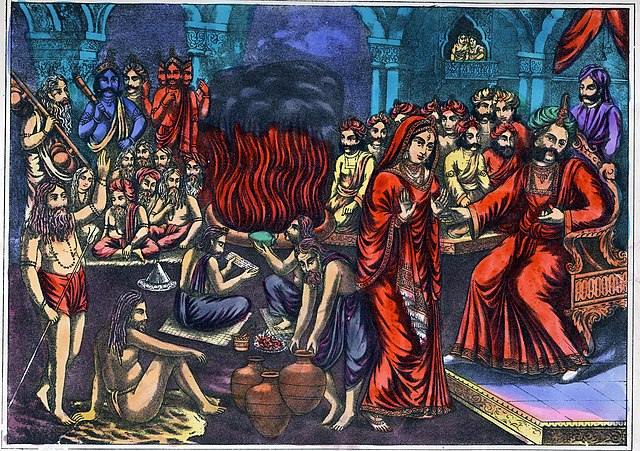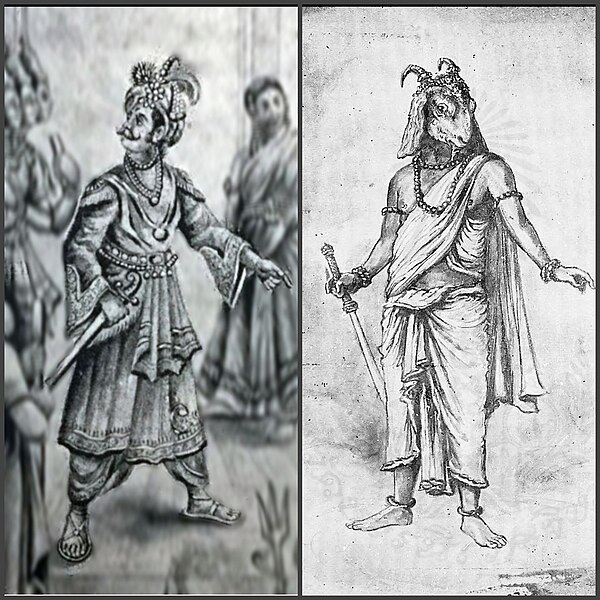Dakṣayajña is an important event in Hindu mythology that is narrated in various Hindu scriptures. It refers to a yajna (ritual-sacrifice) organised by Daksha, where his daughter, Sati, immolates herself. The wrath of the god Shiva, Sati's husband, thereafter destroys the sacrificial ceremony. The tale is also called Daksha-Yajna-Nasha. The legend forms the liturgical basis of the establishment of the Shakti Pithas, the temples of Mahadevi, the supreme deity of Shaktism. It also becomes a prelude to the legend of Parvati, Sati's reincarnation, who later marries Shiva.
Sati confronts Daksha
Daksha criticising Rudra for insulting him in the Satya Yuga
Virabhadra and Daksha
Shiva wandering around holding Sati's corpse
In Hinduism, Daksha is one of the prajapati, the agents of creation, as well as a divine king-rishi. His iconography depicts him as a man with a stocky body and a handsome face or the head of a goat.
Two depictions of Daksha — One with ordinary human features (left) and another with a goat face (right)
A sculpture of the goat-faced Daksha with his wife.
Daksha (right) cursing Narada, an illustration from a 20th-century book.
Daksha insults Shiva while arguing with Sati.







